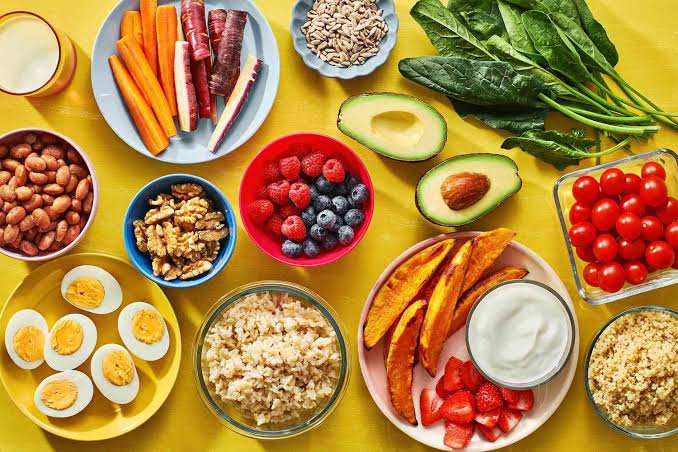Get ready to be amazed as we unveil the world’s top 10 most unhealthy foods. This list is a stark reminder of the dangers that lurk on our plates, from artery-clogging fried creations to sugar-laden monstrosities.
In a world where culinary delights and dietary temptations are limitless, we’re about to embark on a thrilling expedition through the treacherous terrain of indulgence. Brace yourself as we unveil the globe’s most notorious culinary villains, the top 10 most unhealthy foods that have earned a notorious reputation for their adverse effects on our well-being.
These nefarious edibles range from sizzling and greasy fried concoctions that threaten to clog your arteries to decadent, sugar-laden monstrosities that send your blood sugar levels on a rollercoaster ride. As we journey through this nutritional hall of shame, you’ll discover the secrets behind the seductive flavors and undeniable appeal of these culinary nightmares.
But this is more than just a gastronomic thrill ride. It’s a crucial reminder of the hidden perils that lurk on our plates, a wake-up call for us all to make more informed choices about what we consume. This exploration is your passport to a healthier, happier life, offering you a map to navigate away from these dietary disasters.
In this article, we will explore the most unhealthy foods in the world, and it’ll be a journey you won’t soon forget.
Breaking down the top 10 most unhealthy foods in the world:
In a world teeming with culinary options, it is crucial to identify the foods that can jeopardize our well-being. Let’s delve into the ten most harmful food items:

- Sugary carbonated drinks
- Deep-fried temptations
- Processed meats
- Confections and sweets
- Doughnuts
- Potato chips
- White bread
- Cakes and pastries
- Energy drinks
- Decadent milkshakes
Sugary carbonated drinks
These delightful, bubbly beverages tantalize the taste buds but come laden with excessive sugar, leading to weight gain and health woes.
Deep-fried temptations
Consider your cherished fried treats like chicken nuggets and french fries. Their irresistible crispiness hides an abundance of harmful fats detrimental to heart health.
Processed meats
Foods such as hot dogs, sausages, and bacon, while rich in flavor, often harbor chemicals and preservatives that can be adverse to your health, elevating the risk of specific diseases.
Confections and sweets
We all relish the occasional sugary indulgence, but candies and sweets, despite their allure, are usually packed with sugar and provide little nutritional value. Overindulging can lead to weight gain and dental problems.
Doughnuts
These sugary, deep-fried pastries are incredibly tempting but are also a source of trans fats, harmful to your heart. It’s prudent to savor doughnuts in moderation.
Potato chips
Potato chips, with their salty, crunchy allure, are often rich in unhealthy fats, contributing to weight gain and high blood pressure.
White bread
Although white bread is a dietary staple in many households, it is often stripped of essential nutrients during processing. Opting for whole-grain bread is a healthier choice.
Cakes and pastries
Cakes and pastries, undeniably delightful, usually contain high levels of sugar and unhealthy fats. While occasional indulgence is acceptable, excessive consumption can adversely affect your health.
Energy drinks
Promising an energy boost, these beverages often harbor excessive caffeine and sugar, potentially leading to heart issues and restlessness.
Decadent milkshakes:
Sweet and creamy, these beverages overflow with sugar and calories. Overindulgence can culminate in weight gain and various health complications.
Understanding the perils of these foods is the initial stride toward making more informed choices for your health. Being aware of the associated risks allows you to enjoy these items in moderation while emphasizing healthier alternatives.
Ultimately, the world is abundant with tantalizing yet unhealthy food options. It’s essential to be mindful of your dietary choices and strive for a well-balanced diet to safeguard your well-being. You can relish both great taste and good health by selecting healthier options and occasionally indulging in these culinary culprits.
Counting calories
The above-mentioned foods are loaded with calories. Here’s a rough estimate in tabular for better presentation
| Food Item | Calories (per serving) | Additional Information |
| Sugary carbonated drinks | 150-200 calories per 12-ounce serving. | High in added sugars |
| Deep-fried temptations | 365 calories for a medium serving. | High in unhealthy fats |
| Processed meats | 150-200 calories per serving | Often high in sodium, preservatives |
| Confections and sweets | Varies widely, but can be around 200-300 calories per serving | High in added sugars |
| Decadent milkshakes | Around 600-800 calories per serving. | High in added sugars, calories |
| Doughnuts | 200-300 calories each | High in trans fats |
| Potato chips | About 150-200 calories per 1-ounce serving. | High in unhealthy fats |
| White bread | Approximately 150-200 calories. | Lacks essential nutrients |
| Cakes and pastries | Varies widely but can range from 300-600 calories per serving. | High in added sugars, unhealthy fats |
| Energy drinks | Roughly 150-220 calories per serving. | High in caffeine, added sugars |
What is the number 1 unhealthiest food in the world?
In a world brimming with culinary pleasures and dietary enticements, there exists one food item that claims the crown as the absolute ruler of unhealthiness. It embodies indulgence to the point of excess and symbolizes what’s wrong with our modern diets. Introducing the unchallenged king of unhealthy foods: the Big Mac – a fast-food titan. We will explore:

- The Big Mac: A fast-food titan
- Sinister ingredients
- Nutritional nightmare
- Health fallout
- The world’s verdict
- Breaking free
- Ending
The Big Mac: A fast-food titan
The Big Mac, born from the fast-food giant McDonald’s, has reigned supreme for decades. Its iconic double-decker structure, special sauce, lettuce, cheese, pickles, onions, and sesame seed bun are synonymous with fast food. However, under the glossy bun hides a nutritional catastrophe waiting to strike.
Sinister ingredients
Let’s deconstruct the Big Mac, ingredient by ingredient, to uncover the reasons behind its infamy.
The bun
Though seemingly harmless, the bun is typically made from refined white flour, offering little nutrition. These simple carbs can lead to blood sugar spikes and quick hunger return.
The patties:
The heart of the Big Mac, the beef patties, are high in saturated fat and cholesterol, contributing to heart disease risk.
Special sauce:
This “secret” sauce is a calorie bomb filled with unhealthy fats, sugar, and sodium.
Lettuce, cheese, pickles, onions:
While not inherently harmful, they do little to offset the nutritional damage done by the other components.
Sesame seed bun:
The sesame seeds add texture and flavor but can’t redeem the bun’s lack of whole grains and essential nutrients.
Nutritional nightmare
To comprehend the Big Mac’s true unhealthiness, let’s examine its nutritional facts:
- A typical Big Mac boasts around 540 calories.
- It harbors a staggering 28 grams of fat, with 10 grams being saturated fat.
- Sodium levels reach about 970 milligrams, nearly half of the daily recommended intake.
- With 9 grams of sugar, the Big Mac leaves your taste buds craving for more.
Health Fallout
Enjoying a Big Mac may offer fleeting taste satisfaction, but its aftermath is prolonged and far-reaching. Regular indulgence in such unhealthy fare can lead to:
Obesity:
The surplus calories and unhealthy fats can contribute to weight gain.
Heart disease:
Elevated saturated fat and sodium levels can heighten heart disease risk.
Type 2 Diabetes:
The refined carbs and sugar content can affect blood sugar levels, increasing diabetes risk.
High blood pressure:
Excessive sodium can lead to hypertension, a significant risk for heart disease and stroke.
Unveiling the Truth About Big Macs and Our Food Choices
Fast food like the Big Mac isn’t just a meal choice; it symbolizes a larger issue in our society—unhealthy eating habits. Despite efforts by chains to offer healthier options, the enduring popularity of the Big Mac highlights our ongoing struggle with dietary decisions.
Consumers wield significant influence in demanding transparency and healthier alternatives from food providers. It’s time for a collective shift towards better nutrition and informed eating habits.
Breaking Free
Escaping the clutches of the Big Mac and it’s unhealthy peers might take effort, but it’s a journey worth embarking on for your health. Consider these steps:
Educate yourself
Familiarize yourself with nutritional facts provided by fast-food chains. Knowing what you consume is the first step in making informed choices.
Choose wisely:
Opt for healthier menu items like salads, grilled options, and more nutritious sides when dining at fast-food establishments.
Cook at home:
Preparing your meals at home offers complete control over ingredients and cooking methods, ensuring healthier choices.
Moderation:
If indulging in a Big Mac is a must, do so in moderation. Balance it with a diet rich in fruits, vegetables, lean proteins, and whole grains.
Ending
The Big Mac reigns as the undisputed king of unhealthy foods in our world today. Its combination of excess calories, unhealthy fats, and sugar poses significant risks if consumed regularly. While its allure is undeniable, understanding its nutritional pitfalls is vital for conscious decision-making and your well-being.
The fight against unhealthy foods like the Big Mac extends beyond personal health; it’s about reshaping the broader food landscape toward better, more nutritious choices. By making informed decisions and advocating for healthier food options, we can contribute to a healthier world, one meal at a time. It’s time to dethrone the king of unhealthiness and usher in an era of wellness and vitality.
A Nutritional paradise: Exploring the world’s most healthy foods
In our fast-paced world, where busy schedules dominate, it’s crucial to pause and appreciate nature’s bountiful gifts – foods packed with nutrients that not only tantalize your taste buds but also nourish your body. These include:

- Leafy greens: Nutrient-packed greens
- Berries: Nature’s antioxidant bonanza
- Nuts and seeds: Nutrient-rich and full of healthy fats
- Fatty fish: Abundant in omega-3 wonders
- Whole grains: Dietary foundations for health
- Legumes: Protein and fiber combo
- Yogurt: Gut-boosting probiotics
- Garlic: A natural health elixir
- Eggs: Nutrient-rich and versatile
- Avocado: Creamy and heart-healthy
Leafy greens: Nutrient-packed greens
Leafy greens like spinach, kale, and Swiss chard are nutrient powerhouses. Loaded with vitamins, minerals, and antioxidants, they are low in calories. Vitamin K supports bone health, while folate aids cell growth and repair.
Berries: Nature’s antioxidant bonanza
Berries like blueberries, strawberries, and raspberries offer sweetness and antioxidants that shield your cells from harm. Their fiber content promotes digestive health.
Nuts and seeds: Nutrient-rich and full of healthy fats
Nuts and seeds, such as almonds, walnuts, and chia seeds, provide healthy fats like omega-3 fatty acids. These fats support heart health by reducing inflammation and offer protein, fiber, and essential nutrients.
Fatty fish: Abundant in omega-3 wonders
Fatty fish like salmon and mackerel are rich in heart-healthy omega-3 fatty acids. They reduce the risk of heart disease, enhance brain function, and combat inflammation.
Whole grains: Dietary foundations for health
Whole grains like quinoa and oats are fiber-packed with essential vitamins and minerals. They release energy gradually, keeping you full and stabilizing blood sugar levels, promoting digestive health.
Legumes: protein and fiber combo
Legumes, including beans and lentils, are a great source of plant-based protein. Their fiber supports digestion and aids weight management, making them essential for a balanced diet.
Yogurt: Gut-boosting probiotics
Yogurt is not just delicious; it’s rich in probiotics that enhance gut health. A balanced gut means improved digestion, a stronger immune system, and better mental well-being.
Garlic: A natural health elixir
Garlic is famed for its medicinal properties. It contains allicin, which has numerous health benefits, including lower blood pressure, improved cholesterol, and potential antimicrobial effects.
Eggs: Nutrient-rich and versatile
Eggs are packed with protein and essential nutrients, including choline, vital for cognitive function. Enjoyed in moderation, they can be part of a heart-healthy diet.
Avocado: Creamy and heart-healthy
Avocado is loaded with heart-friendly monounsaturated fats that lower bad cholesterol. It’s also rich in potassium, fiber, and essential vitamins and minerals.
These versatile foods can be customized to suit your preferences, making them a delicious and healthy choice for staying fit!
FAQs: The most unhealthy foods in the world

What is the most unhealthy food ever?
The title for the absolute “most unhealthy” food can vary, but dishes high in trans fats, sugars, and excessive sodium are typically considered among the worst for health.
Are there universally recognized unhealthy foods?
While individual opinions vary, foods like deep-fried snacks, sugary sodas, and highly processed products are often considered unhealthy choices worldwide.
How can I identify unhealthy foods?
Look for high levels of saturated fats, trans fats, added sugars, and excessive sodium on nutritional labels. Also, consider the food’s processing and ingredients.
Can I consume unhealthy foods in moderation?
Yes, occasional indulgence is generally acceptable. The key is moderation and balancing such foods with a healthy diet.
Conclusion
Indulging in the world’s most enticing but unhealthy foods may offer instant gratification, yet their long-term impact on health is alarming. These foods, packed with excessive sugars, harmful fats, and processed ingredients, contribute to obesity, heart disease, diabetes, and other health risks. Opting for informed decisions and moderation can safeguard our well-being, allowing us to relish a longer, healthier life.






